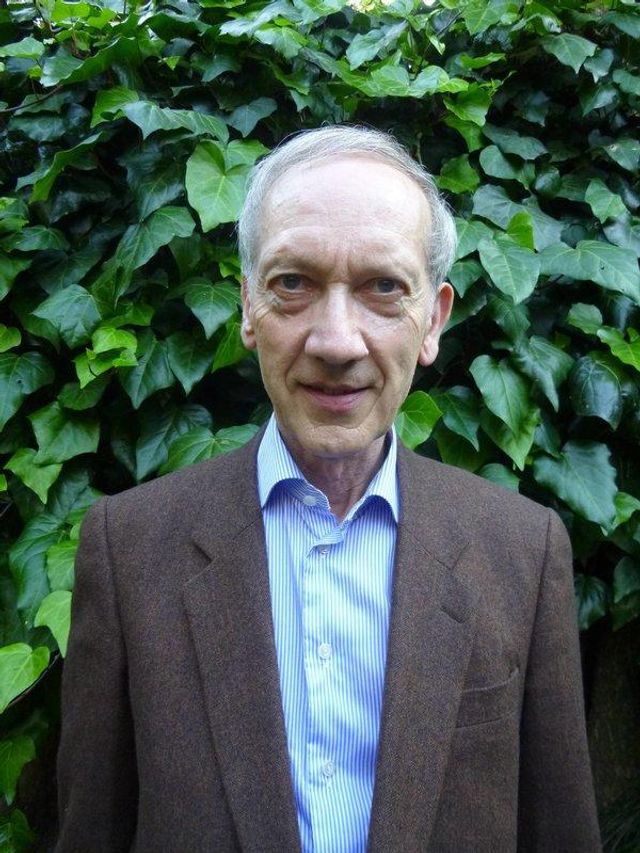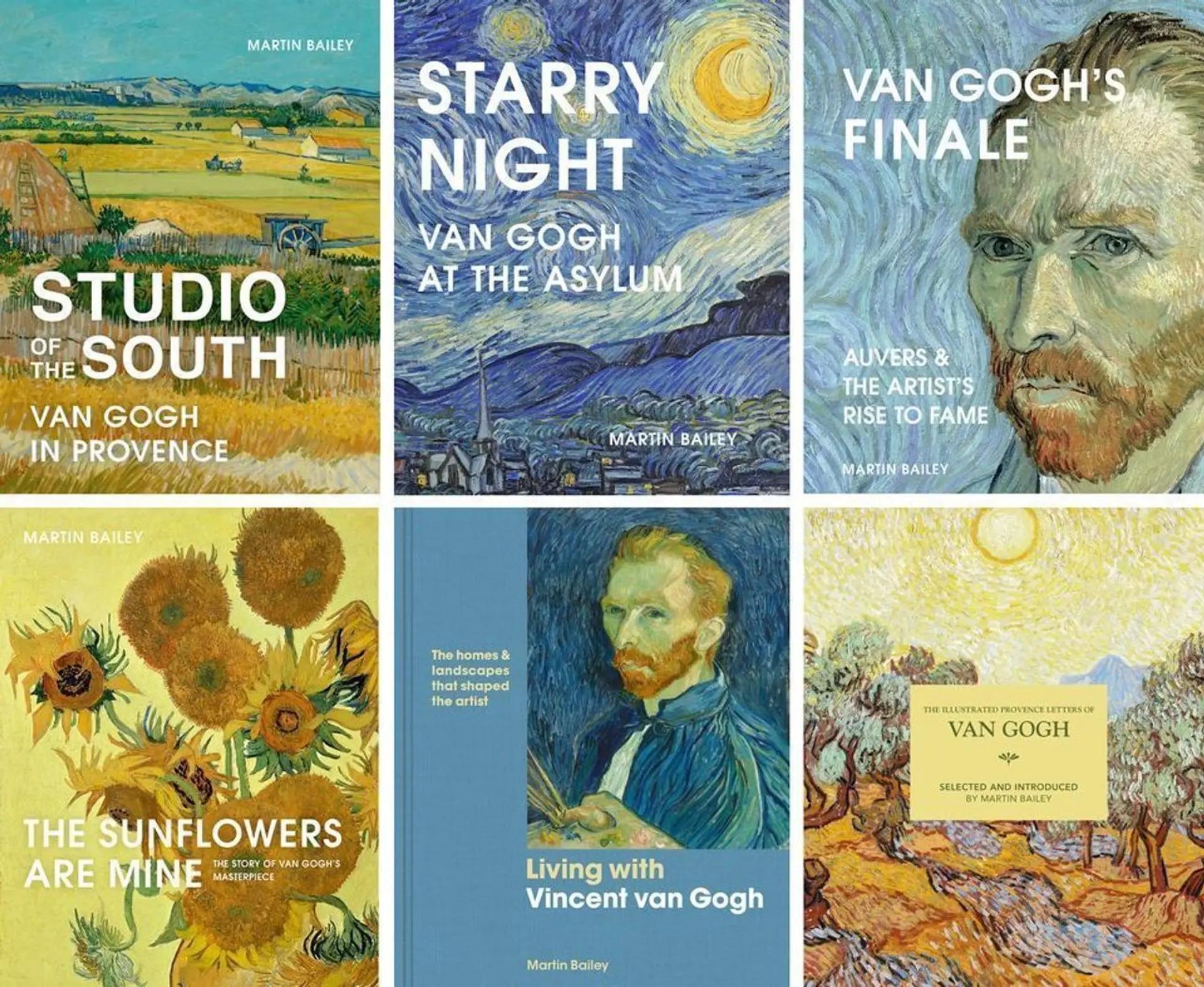It seems unbelievable, but just six years after Van Gogh’s death, a group of students in the northern Dutch city of Groningen put on an ambitious exhibition in his honour, featuring more than 100 of his works. Van Gogh, having failed dismally to sell his paintings, was then hardly known outside avant-garde circles—and hardly at all among the citizens of Groningen. The 1896 exhibition is now being marked with a homage show, How Van Gogh came to Groningen, which opened this week (until 5 May 2025).
Willem Leuring (1864-1936), who was studying medicine, contacted Vincent’s sister-in-law Jo Bonger to ask whether she might be willing to “send us everything” by Van Gogh for an exhibition in Groningen’s museum. Writing on 4 February 1896, Leuring did not know what Bonger had, but it was actually several hundred paintings. With just one large room on the museum’s upper floor, there wouldn’t have been wall space for them all.
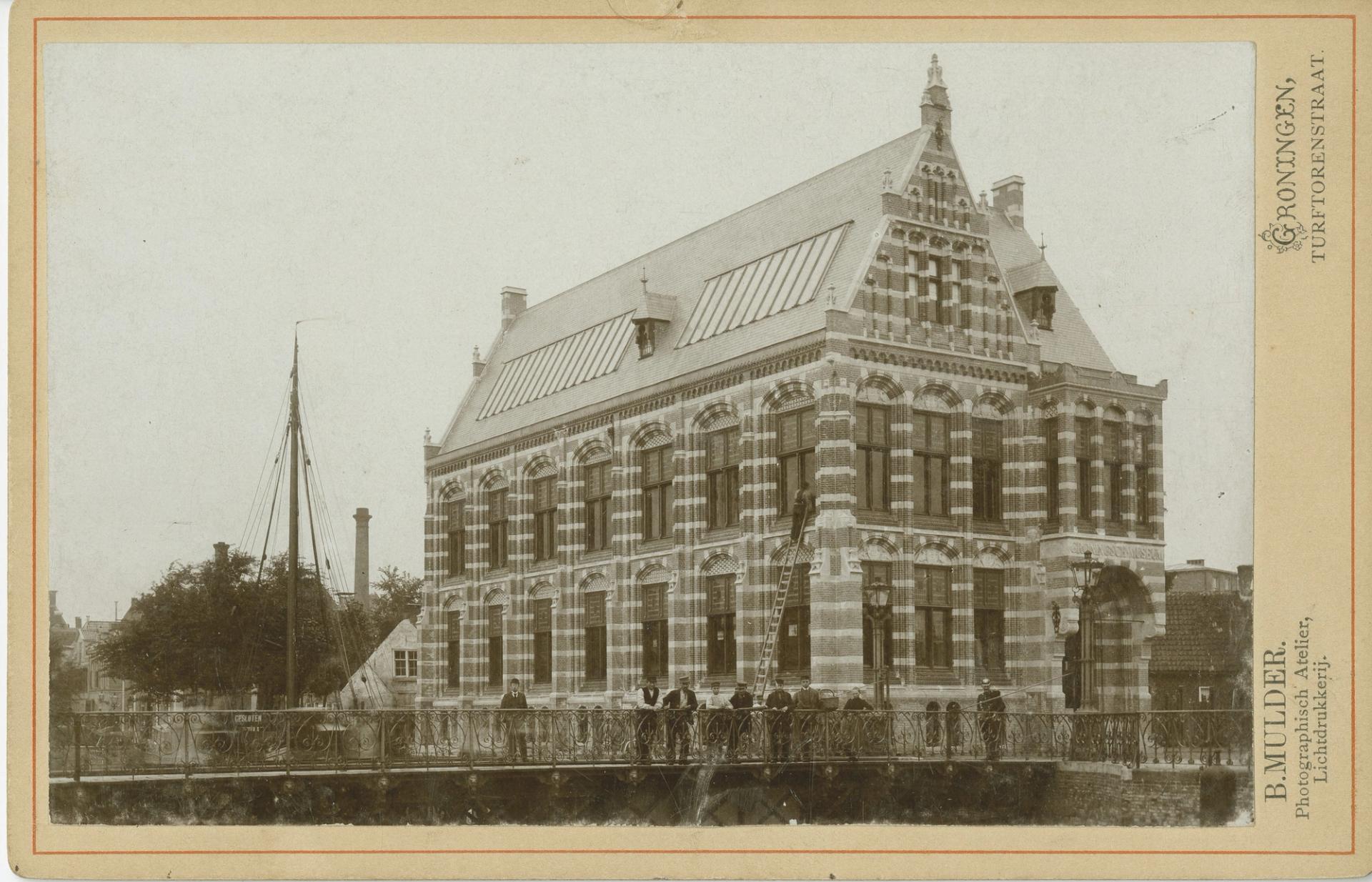
Groninger Museum (1895), with a window cleaner on a ladder facing the room where the Van Gogh exhibition would be held in 1896 © Groninger Archieven
Bonger quickly agreed to lend 102 paintings, sending them by rail on the 200-kilometre journey to Groningen. The show opened on 21 February, just over a fortnight after Leuring’s letter. Twenty five drawings were also borrowed from the Dutch private collector Hidde Nijland, making it the largest exhibition of Van Gogh’s work since his death. In its six days, the show attracted 1,600 visitors. That may not sound many, but a huge Van Gogh retrospective in much more populous Amsterdam in 1905 attracted only 4,500 people in two months.

The cover and last pages of the 1896 Groninger Museum catalogue
Most of the paintings in 1896 were unframed and they may well have been simply nailed to the walls. They included three still lifes of sunflowers (August-September 1887 and August 1888), Starry Night over the Rhône (September 1888), Van Gogh’s Bedroom (October 1888) and Poppy Field (June 1890).
Bonger also lent Henri de Toulouse-Lautrec’s pastel Portrait of Vincent van Gogh. This was because Leuring wanted to hang an image of Van Gogh below a wreath “mainly consisting of thorns with here and there a few laurel leaves”. The thorns alluded to his martyrdom for art and the laurel for his achievements.
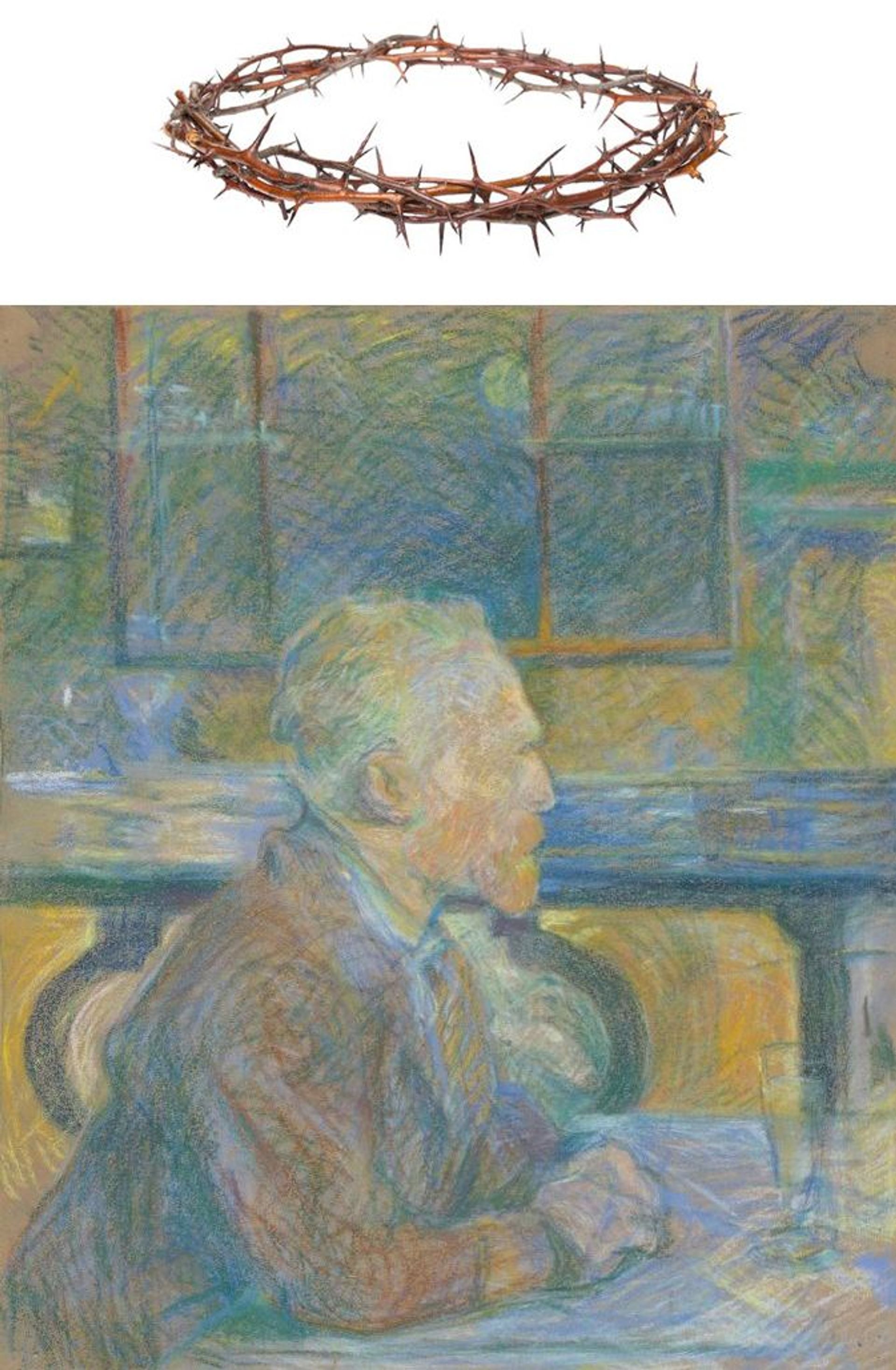
The Art Newspaper’s reconstruction: Henri de Toulouse-Lautrec’s Portrait of Vincent van Gogh (1887) beneath a generic image of a crown of thorns Van Gogh Museum, Amsterdam (Vincent van Gogh Foundation) (Toulouse-Lautrec)
Today’s tribute
The students’ pathbreaking exhibition is now being celebrated by the Groninger Museum, which in 1994 moved to a new building just opposite Groningen’s railway station. This is now the venue of How Van Gogh came to Groningen.
The guest curator Mariëtta Jansen stresses that the artist’s work “came to Groningen thanks to one person: Jo Bonger”. The current show includes 10 paintings (all on loan from other Dutch museums) and 28 drawings, all of which have a link with Groningen (25 of the drawings were in 1896 lent by Nijland, but are now owned by the Kröller-Müller Museum in Otterlo). How Van Gogh came to Groningen includes a huge amount of contextual material, so altogether there are 250 items, including works by other artists, documents and other objects. Organising exhibitions takes longer than it did in 1896: Jansen started work on it six years ago.
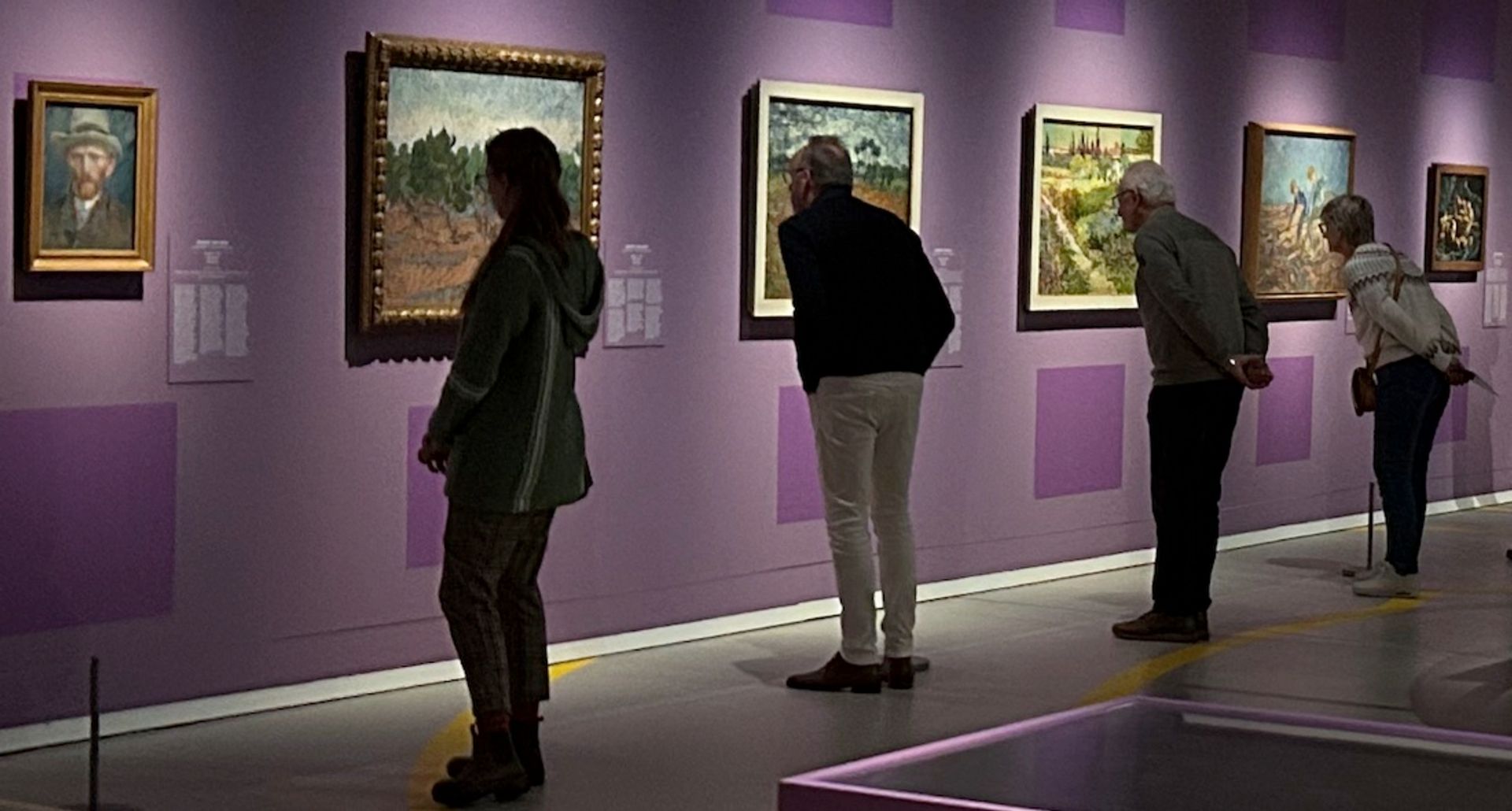
The main room of the exhibition How Van Gogh came to Groningen (until 5 May 2025), with a display of Van Gogh paintings The Art Newspaper
The show also examines the influence of Van Gogh on later Groningen artists, particularly on a group of avant-garde painters who came together in 1918. They called themselves De Ploeg (The Plough), because they believed that the city’s art “needed a good ploughing so new things can germinate”.
The dedication of the De Ploeg artists to Van Gogh is obvious in a series of sunflower paintings, created by members of the group in the 1920s, some of which are brought together on a wall in the current exhibition. Although each painter worked in their own personal style, the subject matter was clearly inspired by Van Gogh.
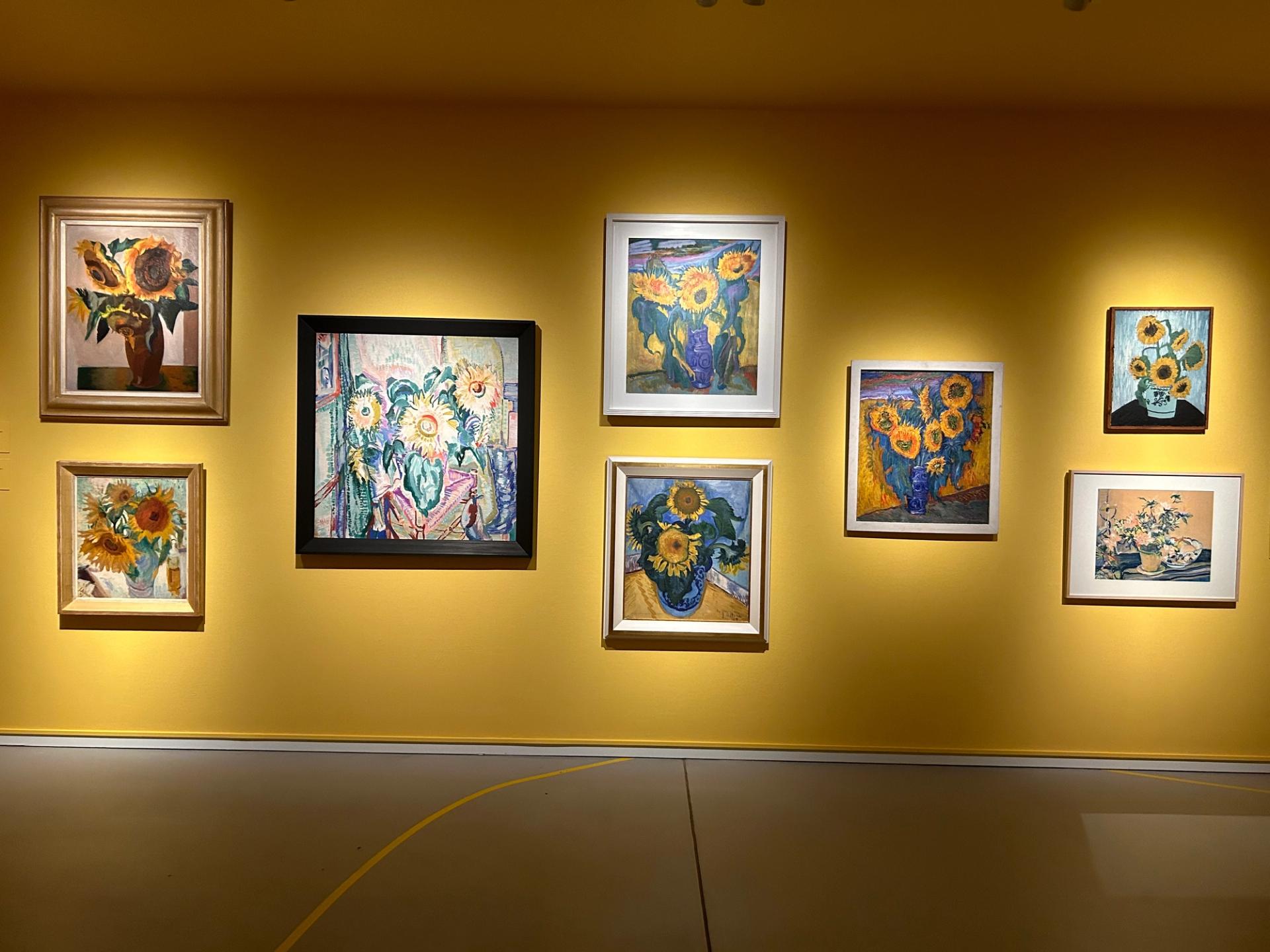
Sunflower paintings by members of De Ploeg (from left to right, Jan Wiegers, Jan Altink, George Martens, Johan Dijkstra, Altink, Dijkstra and H.N. Werkman), on display in How Van Gogh came to Groningen Various collections (photograph The Art Newspaper)
The De Ploeg artists also wanted to create a memorial to their hero. In 1922 the group’s minutes record that “several members asked whether it would not be possible to erect a statue for Van Gogh”. This never happened, and it would not be until 1961 that the first large-scale public statue of the artist was created by Ossip Zadkine for the village of Auvers-sur-Oise, where Van Gogh died.
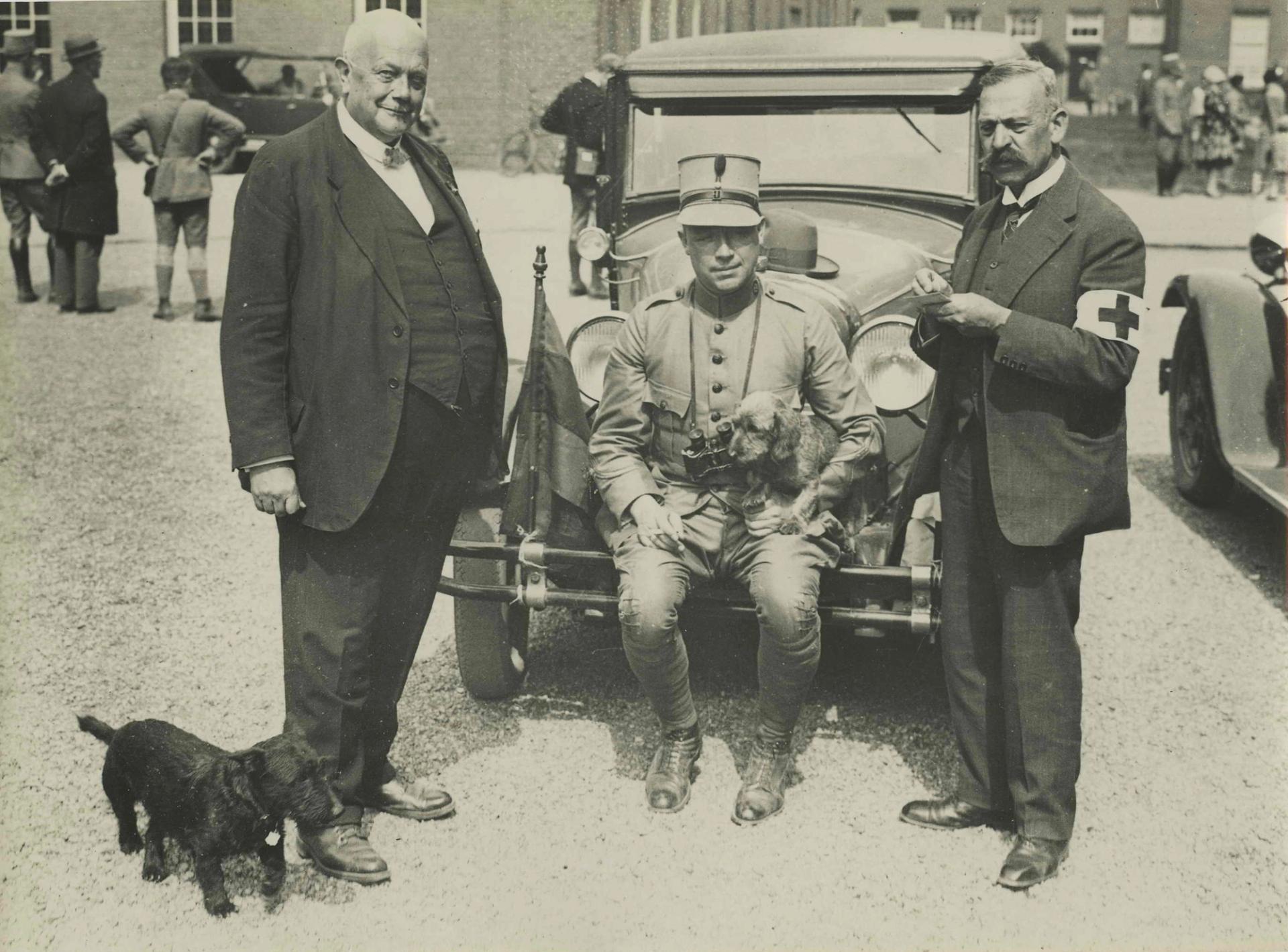
Willem Leuring, on the left (1934) Regionaal Archief Nijmegen
As for Leuring, he became a respected dermatologist. His love for Van Gogh did not wain after his student days. In around 1901 he bought two Van Goghs, including Landscape under Stormy Sky (April 1889). After passing through various hands this painting sold for $54m at Sotheby’s in 2015.
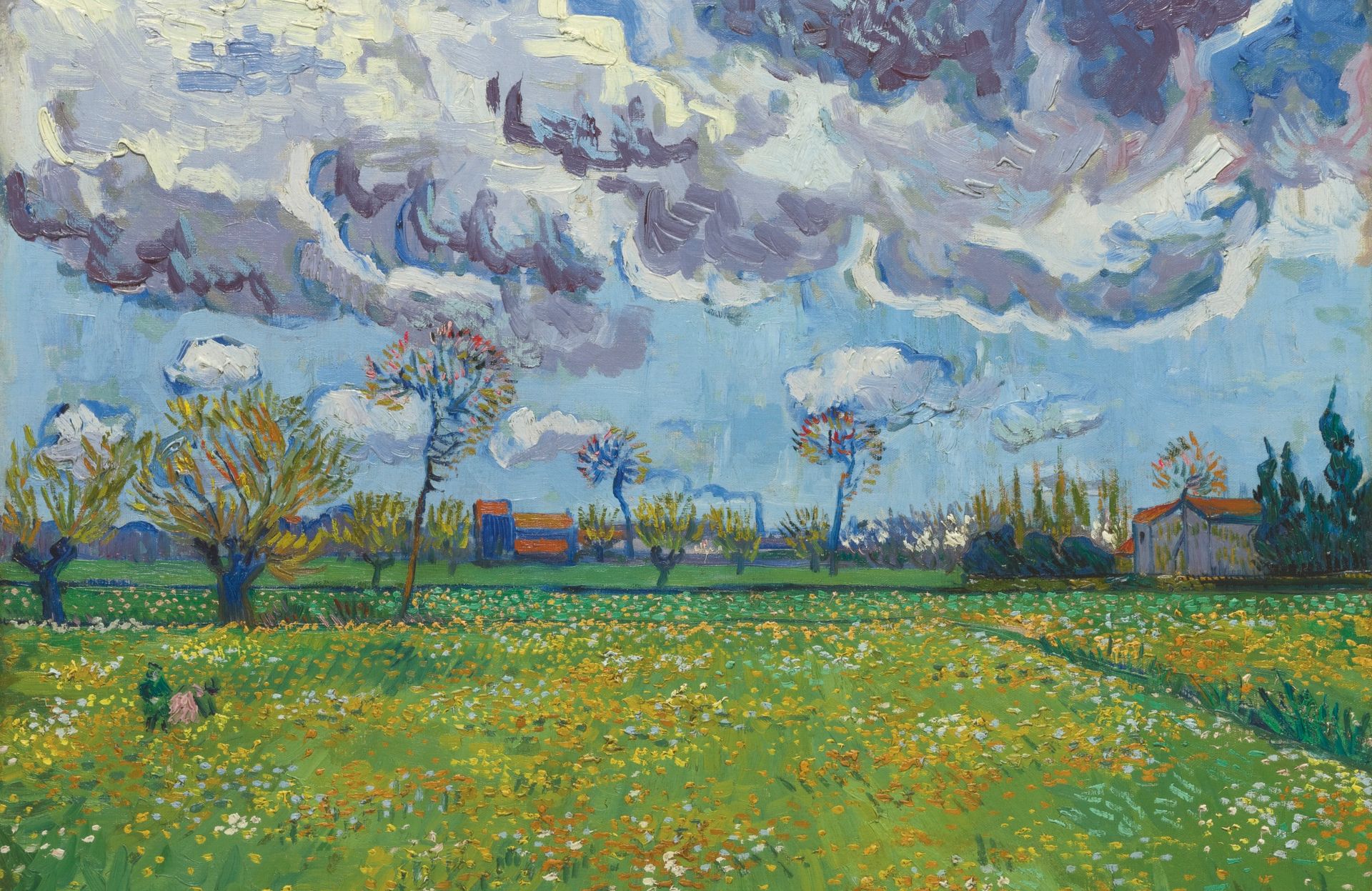
Van Gogh’s Landscape under Stormy Sky (April 1889). Photo: Wikimedia Commons
Stolen, then recovered in an Ikea bag
Along with the current exhibition, visitors to the Groninger Museum will have another treat to discover. Van Gogh’s Parsonage Garden at Nuenen in Spring (March 1884) is back on display after it was stolen. It was seized in a smash-and-grab raid when it was on loan to a museum in the Dutch town of Laren in 2020 and recovered in dramatic circumstances three years later.
Displayed with the painting is the Ikea shopping bag in which it was recovered—and handed over to the Groninger Museum’s director Andreas Blühm. The museum label names the designers of the ubiquitous blue plastic bag as the distinguished Danish siblings Marianne and Knut Hagberg, who created it in 1989. The wall label explains that the bag was made for “carrying heavy objects”, wryly noting that it “was not designed for transporting delicate works of art”.
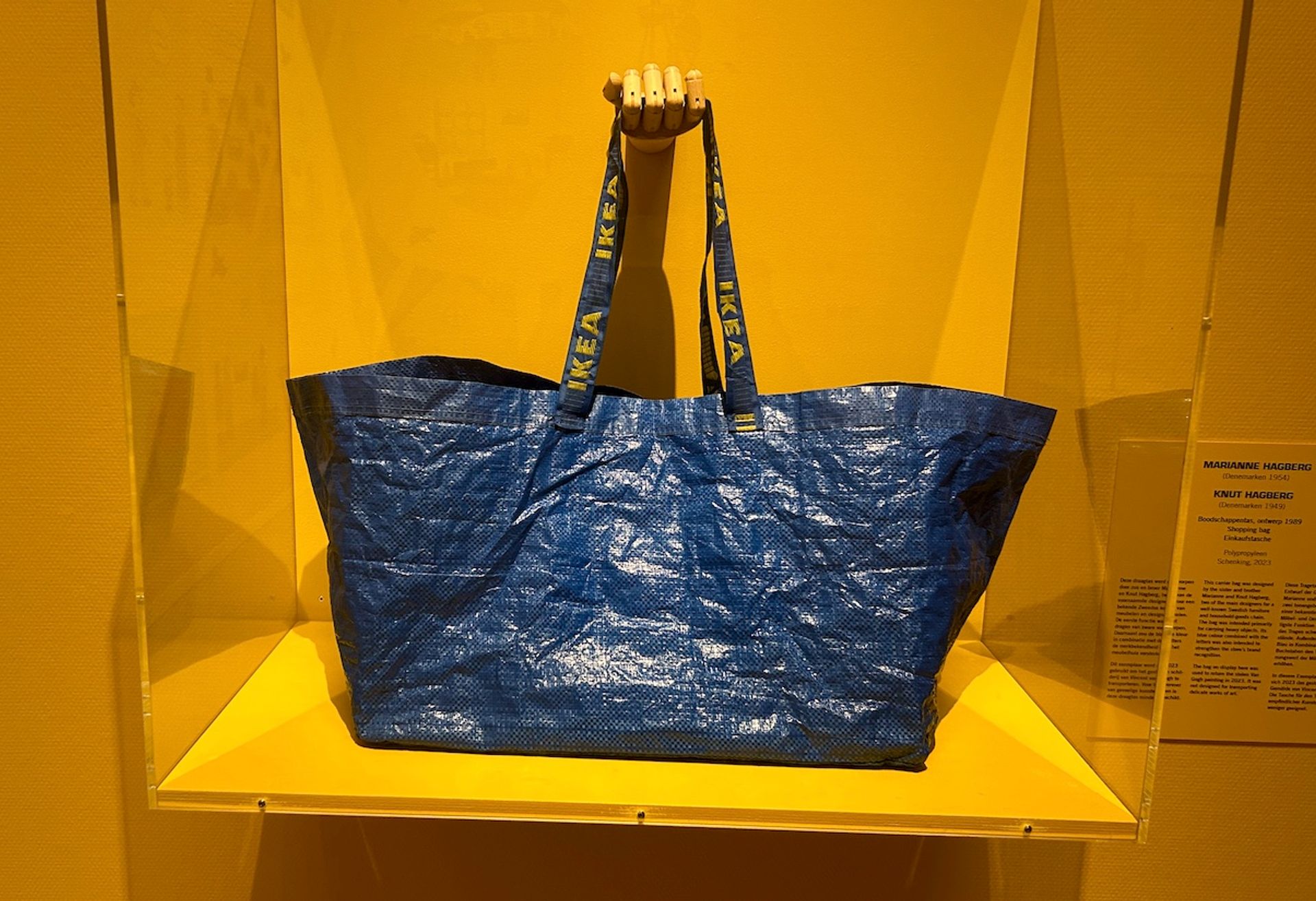
The Ikea shopping bag, designed by Marianne and Knut Hagberg, in which Van Gogh’s Parsonage Garden at Nuenen in Spring (March 1884) was recovered The Art Newspaper



